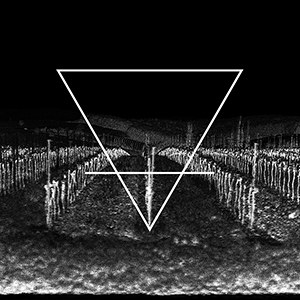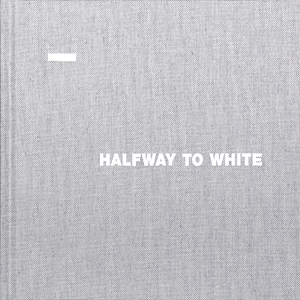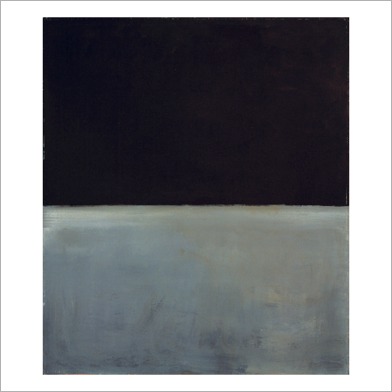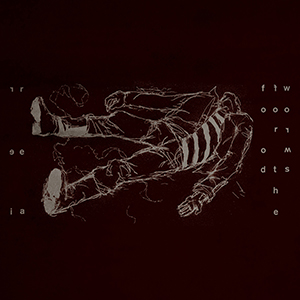- Administrator
- Albums and Singles

Witness the latest rebirth of Campbell Kneale. It has happened before, and probably will again. This Wellington, NZ artist is on the forefront of the world noise scene, having cut his teeth for a decade in Birchville Cat Motel and more recently as Our Love Will Destroy the World. Carnivorous Rainbows is electronic music at its most relentless; four tracks of pure, hot skree constantly rebuilding like a viper’s unpredictable strike. Some percussion rattles throughout, a few instruments are arguably perceptible, and a beautiful harmony of intensity creates a gorgeous tapestry of sounds.
You can preview the track "Hades Iron Horizon" on Ba Da Bing's Soundcloud here.
More information can be found here.
Read More
- Administrator
- Albums and Singles

In typically fine form, The Acid Mothers Temple and The Melting Pairaiso UFO have delivered another smoker to Important Records. Double LP pressed in an edition of 1000 copies.
Benzaiten is an In C-style homage to the the classic Osamu Kitajima record of the same name. The Acid Mothers Temple covers the title track and reprise using Kitajima's original composition as a departure point to explore the outer realms of AMT territory. Further instrumental explorations reveal textures of the original composition while launching out further into the cosmic domain. Numerous Acid Mothers original tracks are scattered in between. Benzaiten!
More information can be found here.
Read More
- Administrator
- Albums and Singles
 I had never heard Retribution Body before this album (which is a shame), but Aokigahara immediately got my attention for: 1.) being inspired by Japan's legendarily demon-haunted "suicide forest," and 2.) being released on the hyper-discriminating and oft-dormant Type label.  Also, it is a unique and near-great album.  Matthew Azevedo's singular drone performance/bass tone study has already drawn favorable comparisons to artists like Sunn O))) and Earth, but I actually see it much more in line with more formal electronic composers like Eliane Radigue, as it has a chiseled purity to it that feels very different than amplifier-worship (at times, anyway).  That said, Aokigahara is still quite heavy.
I had never heard Retribution Body before this album (which is a shame), but Aokigahara immediately got my attention for: 1.) being inspired by Japan's legendarily demon-haunted "suicide forest," and 2.) being released on the hyper-discriminating and oft-dormant Type label.  Also, it is a unique and near-great album.  Matthew Azevedo's singular drone performance/bass tone study has already drawn favorable comparisons to artists like Sunn O))) and Earth, but I actually see it much more in line with more formal electronic composers like Eliane Radigue, as it has a chiseled purity to it that feels very different than amplifier-worship (at times, anyway).  That said, Aokigahara is still quite heavy.
Matthew Azevedo does not have a typical "noise artist" pedigree, as he has a long career as a mastering engineer, as well as an academic background in acoustics research.  Usually I am not terribly interested in a musician's formal credentials (if not actively dismissive), but they are quite relevant in this case, as being knowledgeable about frequencies, mastering, and architectural acoustics is essential for an album devoted almost entirely to exploring the potential of oscillating bass frequencies.  Appropriately, Aokigahara is a site-specific work, as this recording was taken from a 2013 performance at Fisher Recital Hall in Lowell, MA.  Azevedo performed these two pieces using guitars, piano, and host of strategically placed microphones.  Given that origin, I suspect the album is a mere shadow of the actual performance, especially since I do not possess a stereo set-up with killer sub-woofers.  It is still quite an imposing shadow though, particularly when it sticks to just throbbing and oscillating bass tones.
The strongest parts tend to be the simplest, such as opening moments of "Sea of Trees," where Azevedo’s deep bass amorphously throbs, pulses, and plunges in a glacial rhythm.  It calls to mind an ominous spreading blackness, like slow-motion footage of an octopus's ink cloud.  Gradually, it pulls further apart structurally while increasing in power, ultimately evolving into an unexpected minimalist/neo-classical piano recital that sounds like it is happening as the entire world is being torn apart by a black hole.  Or maybe it just sounds like a mad genius playing a final discordant piano concerto in his subterranean lair as his castle collapses above him.  Either way, it is quite a singular aesthetic.
My other favorite part is the opening of "Sea of Stars," in which Azevedo violently disrupts a machine-like hum with jarring crunches and rumbles.  The rest of the piece is a bit more subdued (and better) than "Sea of Trees," intermittently resolving into passages of awesomely deep, rhythmic throb.  Those are the moments that I like best: just simple, pulsing elemental power.  As far as the album is concerned, I wish Azevedo had just stuck to that style of visceral, throbbing minimalism, as the more musical and/or maximalist bits seem like a dilution of what Aokigahara excels at, which is artfully using low-frequency power and oscillation for hypnotic, gut-level waves of force.  That said, I was not at Fisher Recital Hall and I imagine there is probably a lot to be said for the awesome building-leveling, speaker-destroying entropy that Azevedo's crescendos must have unleashed.  Consequently, Aokigahara's minor flaws are more a function of media and context than any sort of compositional failing, as these pieces were not intended to be heard on a record player in someone’s living room or an iPod in a car.  Also, they are only flaws in the sense that they prevent Aokigahara (the album) from being a stone-cold drone masterpiece.  Instead, it is merely a very original and satisfying document of what was almost certainly a stone-cold performance masterpiece.
 
 
Read More
- Administrator
- Albums and Singles
 Eric Quach has been producing works of experimental guitar and electronic drone for about a decade as thisquietarmy. His first full length album since last year's Rebirths, Anthems for Catharsis has as much weight and heaviness as its dramatic title would imply. A perfect balance of dissonance and beauty, the six songs elegantly drift from darkness to lightness, often within the confines of a single piece.
Eric Quach has been producing works of experimental guitar and electronic drone for about a decade as thisquietarmy. His first full length album since last year's Rebirths, Anthems for Catharsis has as much weight and heaviness as its dramatic title would imply. A perfect balance of dissonance and beauty, the six songs elegantly drift from darkness to lightness, often within the confines of a single piece.
Quach's work on this record draws from nearly every genre that could be associated with the word "rock."Multitracked guitars stretch out in every direction; mixed with (or processed to sound like) synthesizers, all the while drum programming keeps things moving in a strict, yet memorable rhythm.Some of the bleakest moments appear on the opening "Ruminations":deep sustained guitar noise and a distant sound that sounds like monstrous banging on a metal door ensure the mood is anything but light.
Darkness abounds on "Masquerade" as well, via big, cavernous drums and heavy guitar squalls.Compared to many other points on the record there is a more dominant, forceful sound, but it comes in a slower, dirge-laden package.Even with this force, there are long, beautiful stretches of melody that result in a song with more depth than most heavy songs such as this would have.
The other pieces, however, tend to journey from dark to light passages within their self-contained duration.The slow and majestic "From Darkness Redux" is a gauzy mass of sustained guitar melodies and almost synth-like passages, buoyed by a forceful underlying rhythm.The sound is a perfect mix of dour and uplifting:a precarious balance done exceptionally well.The complex rhythms and layered melodies of "Accommodator" result in a similar structure, but with heavier drama and transitioning from dungeon darkness into soaring, beautiful heights.
The album’s final composition, "Closure," is the most fully realized and complex work on an extremely strong album.Beginning from a vast space of droning feedback and plinking noises via guitar, Quach builds the piece up, adding in what sounds like electronics and bent guitar sounds, resulting in a richer and very powerful mix.Finally, he piles on glistening, expansive tone to a powerful climax, ultimately stripping things down to end on a beautifully understated note.
Anthems for Catharsis is yet another masterwork from Eric Quach's thisquietarmy project.His ability to balance extreme moods is unparalleled, and this album beautifully drifts from both sides.Gorgeous melodies, metronomic rhythms, and complex atmospheres abound, but perhaps its strongest asset is the sense of composition.Rather than just collections of sounds or noises, these feel like actual songs, with a distinct flow and development, resulting in a brilliant record.
samples:
 
Read More
- Administrator
- Albums and Singles
 For years, Netherworld's Alessandro Tedeschi has been curating a label that has embraced the cold, frigid minimalism of electronic music. Now via a new sub-label imprint, Iceberg, he has changed the template a bit. While Glacial Movements was a fitting name for the slow drifts of expansive sound, Iceberg fits this debut as a more kinetic, aggressive, and in this case, beat oriented sound.
For years, Netherworld's Alessandro Tedeschi has been curating a label that has embraced the cold, frigid minimalism of electronic music. Now via a new sub-label imprint, Iceberg, he has changed the template a bit. While Glacial Movements was a fitting name for the slow drifts of expansive sound, Iceberg fits this debut as a more kinetic, aggressive, and in this case, beat oriented sound.
Abstract and sparse electronics still heavily feature in Tedeschi's sound throughout the five lengthy pieces that make up Zastrugi.However, while his previous works as Netherworld resulted largely in quiet tones and massive spaces, here there is more than just the inclusion of electronic rhythms.As a whole, there is a perceptible sense of depth to the album that makes it all the more engaging;A sense of space and almost architectural like structure to how almost tangible elements of the mix can be.
On a piece such as "Sérac," spoken word recordings are mixed with a heavy, deep thudding passage of percussion.The second half has him mixing in a collage of harsher, noisier sounds that never push the envelope too far, but is a distinctly different, and rawer edge to it than his wind-swept previous work.The up-front forceful sound also features heavily on "Dry Andes," where an overdriven kick drum thump is pushed loud enough in the mix to almost be painful.The remainder may be echoing noises, clattering distortion and synth expanses, but it does not emphasize subtlety.
A piece such as "Mapsuk" might not be as harsh as some of the others here, but it also does not stay as minimalist as his previous work was.Dense, foghorn like bursts of tone appear, then are transformed into sonar-like pings and deep, cavernous beats.There is a lot of variety throughout, via unidentifiable and broken tones that make up the composition.Tedeschi buries the punchy kick drum far off in the distance on "Bergie Seltzer," with an oddly created white noise approximation for a snare drum adding additional accents.The second half is a bit noisier, but in a light and tasteful way. The concluding "Uikka" has the addition of what sounds like fragmented female vocals with a deep 909 kick.Something that potentially could be a sampled electric guitareven appears in the closing minutes to close the album on a harsher and more aggressive note.
The Glacial Movements label has been rekindling the short-lived isolationist sound movement since its inception, and now it seems that Iceberg is going to revive the minimalist techno sound that followed it.While I would have preferred a greater variation on the rhythms (the ones here stick mostly to the 4/4 kick variety), there is still more than enough diversity on Zastrugi to keep it engaging throughout its entire duration.
samples:
 
Read More
- Administrator
- Albums and Singles
 Young God Records is releasing a Deluxe 3 CD edition of SWANS debut album FILTH May 26 in North America; Mute releases this package in all other territories.
Young God Records is releasing a Deluxe 3 CD edition of SWANS debut album FILTH May 26 in North America; Mute releases this package in all other territories.
Read More
- Administrator
- Albums and Singles
 For the inaugural release in their new Folio sub-imprint, Touch has paired Mika Vainio with photographer Joséphine Michel for a joint photography and music project heavily focused on the abstract nature sound and its impact on the other senses and mediums. With heavy use of white exposure on the photographs, and the heavily treated use of white noise on the CD, it culminates in a very strong synthesis of audio and visual.
For the inaugural release in their new Folio sub-imprint, Touch has paired Mika Vainio with photographer Joséphine Michel for a joint photography and music project heavily focused on the abstract nature sound and its impact on the other senses and mediums. With heavy use of white exposure on the photographs, and the heavily treated use of white noise on the CD, it culminates in a very strong synthesis of audio and visual.
Compared to his recent albums, Vainio's audio contributions to this project are more abstract and deconstructed than his busier, often rhythm tinged work.He utilizes expansive passages of silence (white space) amongst blasts of noise and strange frequencies that sound anything but identifiable."Fade from Black," for example, features Mika melding the large passages of silence with heavy, almost imperceptibly low frequencies tones and glassy resonations.
At the conclusion of the album, "White Out," is less rooted in silence but features the same subwoofer destroying bass frequencies.A rising and falling electronic hum from what sounds like processed white noise stays consistent throughout the piece.Towards the end, bits of what sounds like actual melody appear and result in him creating the most traditionally musical sounding piece on the disc.
"Missing a Border" is a noisier excursion, with bits of what almost sounds like a conventional synthesizer heavily processed and demolished.Even though it is one of the more kinetic and noisier pieces, it still never becomes too overwhelming or aggressive, barring the overly shrill ultrasonic bits that sharply cut through.Bleak and moody are the best ways to describe "Notes On the Exposure," a slowly expanding piece of midrange digital noise that is less of a dominating sound.
It is on "Lines of a Curve" that the sound I most associate with Vainio’s body of work.Sequences of pitch bent clicks and pops scatter about, resulting in the loosest semblance of rhythms.Much of the piece is made up of crackly textures, with buzzing noise and silence blended in, and oddly disorienting Doppler effect heavy passages of sound.
Michel’s photography, sourced from a digital camcorder, may differ in its technological nature from Vainio’s analog instruments, but the presentation complements it perfectly.Natural and man-made structures feature heavily in her work, as do candid photographs of people in industrial spaces.While critiquing photography is not at all my forte, her heavily white-drenched digital stills, with odd color artifacting, and often overlaid with found patterns and textures, look as Vainio’s music sounds.
As the Touch label continues into its fourth decade of activity, Halfway to White is a contrast to its early days.While before the label would issue compilations on cassettes paired with small run magazines, now they are working in the media of high quality digital recordings and beautifully bound, art edition quality books.Vainio's and Michel's work compliment each other splendidly on here, and the result is a fully realized collaboration between two distinct and exceptional artists.
samples:
 
Read More
- Administrator
- Albums and Singles
 Since returning to the world of music, ACL's Elden M. has been quite prolific, releasing a batch of new cassettes under his previous noise-associated moniker, while also taking on the world of rhythm-based electronic music as Avellan Cross. Although issued as Allegory Chapel Ltd., GNOSIS: Themes for Rituals Sacred & Profane draws from both of his major projects. Dissonance appears more in a compositional sense, but his use of undistorted synths is largely not something that can be danced to.
Since returning to the world of music, ACL's Elden M. has been quite prolific, releasing a batch of new cassettes under his previous noise-associated moniker, while also taking on the world of rhythm-based electronic music as Avellan Cross. Although issued as Allegory Chapel Ltd., GNOSIS: Themes for Rituals Sacred & Profane draws from both of his major projects. Dissonance appears more in a compositional sense, but his use of undistorted synths is largely not something that can be danced to.
As insinuated by the title, the running theme of ritual; religious and otherwise, appears peppered throughout these four songs.Once again exemplifying his adeptness and composition and creativity, the symbolism is never heavy-handed or blunt.The twinkling synths that appear all over "Machine," mixed with a taped voice that is somewhere between psychology lecture and self-help presentation seem to encapsulate the rituals associated with new age beliefs.
"Solar Rite (For Suspension)" is the other more electronically direct piece on this cassette, and one closer to his work as Avellan Cross.Lead at first by a simple thudding kick beat and wet, heavily phased synth sequences, he morphs it into something almost danceable with added keyboards and snare drum programming.Between the title and the sound, there is a definite neo-pagan ritualistic sensibility to be heard, but wonderfully understated.
The other two pieces are a bit less conventional in sound and instrumentation, but Elden M. never allows it to drift into formless chaos."Sephiroth/Enochian Calls" features more obscured voice samples, but more of a dark and distorted low end synth backing.With that backing, buzzing nasal noises and snippets of Gregorian chant, it has a classical sensibility to it, and throughout the whole piece there is a slow descent into madness, as the overall piece becomes more and more disorienting and oblique.
On the final work, "Mata Jewels (Surah Al Alaq)," he utilizes what sounds like Islamic prayer vocals at a couple different points, all underscored by subtle and tasteful electronics.Based upon the title, the mood leans more towards the sacred than the profane, at least as far as presentation goes.I was very happy when I saw that Elden M. was reentering the world of experimental music with his two major projects, and each bit I have heard has simply solidified this excitement.Each release has lived up to my highest hopes and sounded completely unexpected, yet never has lacked his impeccable sense of structure and composition.
samples:
 
Read More
- Administrator
- Albums and Singles

Blues: The Dark Paintings of Mark Rothko is one of Loren Connors' most cherished and sought after albums. Originally released in a handmade edition of 200 or so copies on Connors' own St. Joan imprint in January 1990 under the name Guitar Roberts -- Blues has been unavailable in any form until now.
At time of its release, Connors was still an inscrutable guitarist whose matchless and alien rendering of the blues was just gaining recognition despite more than a dozen solo and collaborative releases since 1978. Connors' classic, song-based In Pittsburgh had only been available for three months when Blues welcomed the new decade with its reformation of the blues as minimalist lines and tone; a compound of influences spanning Louisiana guitarist Robert Pete Williams to painter Mark Rothko.
"Moving with the slow, stately weirdom we expect of Connors' late '80s sound, the music is all shards, all pokes in the eye, as though Rothko's gray scale had exploded, sending shrapnelized paint rocketing through your brain," music historian Byron Coley writes in the liner notes of this reissue. "Just as Connors' notes ricochet hauntedly through its recesses."
For this reissue, engineer Taylor Deupree restored the audio to Connors' specifications of how these seven instrumentals were intended to sound. Cover art is an untitled 1969 Rothko work -- a painting that influenced the album. The original LP jacket is replicated as a glossy inner sleeve. New liner notes by Coley chart Connors' development and the influence Rothko had on him as a guitarist.
More information can be found here.
Read More
- Administrator
- Albums and Singles
 A reissue of a previously limited self-released cassette, the newest release from Christian Dubé is as uplifting as its title. While it might be (extremely) dark, it is also an exceptionally well done melding of clattering rhythms and harsh electronics dissonance that clearly pays homage to the two genres’ innovators, but the sound is anything but a direct copy.
A reissue of a previously limited self-released cassette, the newest release from Christian Dubé is as uplifting as its title. While it might be (extremely) dark, it is also an exceptionally well done melding of clattering rhythms and harsh electronics dissonance that clearly pays homage to the two genres’ innovators, but the sound is anything but a direct copy.
Dubé’s employment of percussion, at times sounding like processed drum machine, at others improvised metal banging, results in the most memorable pieces on this tape.The stylistic nature of these rhythm based pieces resulted in them being my favorites, reminding me of music I grew up with while still being fresh.For example:the heavily processed, big crashing rhythms of "War Rat" result in a brilliant blend of compelling rhythms and sinister bass sounds that have an obvious song-like structure, but have a far less conventional sound.
On the other side of the cassette, "Garry Membrain" features lo-fi hyper-kinetic drum programming and more overt, untreated keyboard sounds.Even amongst the others on this tape, this is one of the peak aggressive and creepy moments, with the second half loosing the otherwise taut structure of the piece and instead allowing it to sprawl out wonderfully.
The other style that Rei Rea heavily draws from, harsh electronics, appears on the album via passages of loud electronic noise and unrecognizable, harsh vocals.The aforementioned "War Rat" features what I assume is his voice, but processed and unintelligible to end up sounding more like any other instrument.Voices also appear on the clang-heavy "Torture Well," which sounds like Dubé playing a bass guitar as a percussion instrument in lieu of traditional rhythms.With the sampled screams and free form, deafening drone that concludes the piece, I felt hints of the earliest (and best) Dissecting Table coming out of the song.
The two concluding pieces are less forceful, instead having a dreary, rhythmless throb to them."Giant" sounds as if it is constructed from a droning cello or synth string passage, run through a wide variety of delay effects.While the elements may be basic, Dubé does quite a bit with them and the whole is certainly greater than the sum of its parts.The final "Scoff" follows a similar blueprint, being heavily steeped in expansive strings.Here the low end frequencies are emphasized and layered, resulting in a rich, thick piece that has just the right level of eerie.
Between the stiff, inorganic sounding drums, overdriven synths and indecipherable vocals, Rei Rea's influences are recognizable, yet he never even comes close to direct emulation.Food for the Worms is bleak, depressing, and harsh, and does those themes exceptionally well, embracing just the right level of terror without crossing into self-parody.As everything I have heard from him, Food For the Worms is another exceptionally strong piece of music.
samples:
 
Read More
- Administrator
- Albums and Singles
 I can always count on Richard Skelton to find the strangest and most unexpected inspirations for his albums and he does not disappoint me with his latest: Belated Movements is largely based upon the "Lindow Man," a well-preserved body found in a peat bog in the ‘80s.  As far as ancient bog bodies go, Lindow Man surely ranks among the most hapless, having met a violent (possibly ritualistic) death by being strangled AND having his throat cut, then getting freeze-died and displayed in a museum two thousand years later.  Given that base material, it is hardly surprising that Movements is a much more sadness-steeped affair than any of Skelton’s other recent work, resembling nothing less than an atypically industrial-damaged and time-stretched requiem.
I can always count on Richard Skelton to find the strangest and most unexpected inspirations for his albums and he does not disappoint me with his latest: Belated Movements is largely based upon the "Lindow Man," a well-preserved body found in a peat bog in the ‘80s.  As far as ancient bog bodies go, Lindow Man surely ranks among the most hapless, having met a violent (possibly ritualistic) death by being strangled AND having his throat cut, then getting freeze-died and displayed in a museum two thousand years later.  Given that base material, it is hardly surprising that Movements is a much more sadness-steeped affair than any of Skelton’s other recent work, resembling nothing less than an atypically industrial-damaged and time-stretched requiem.
I have to admit that I was a bit caught off-guard by this album for a number of reasons.  The primary one is that it plunges wholeheartedly back into the free-floating melancholy that characterized much of Richard’s earlier work.  His more recent work has not exactly been cheery, but his career trajectory has thus far largely been away from gloom and towards something more timeless, vibrant, and organic (albeit with some exceptions, of course).  Also, Belated Movements does not particularly sound like an evolution or continuation of The Inward Circles' debut; rather, it feels kind of like an unrelated one-off project.  The only real thread linking the two is that they focus on Skelton’s more long-form compositions.  In fact, Belated Movements even raises the bar in that regard, dividing its hour-long running time into just three pieces.
The first and longest piece, "Petition for Reinterment," is the album’s funerary centerpiece.  Structurally, it is deceptively simple, as it is based primarily upon an endlessly repeating two-note cello or double-bass drone, though that framework eventually dissolves completely (just like the skeleton of a bog man!).  Later, however, it reappears somewhat changed and essentially carries on to form the basis of the second piece ("To Your Fox-Skin Chorus") as well.  The stated theme of "Petition" is "decay and renewal" and those transformations are largely where the piece’s beauty lies: not much happens melodically at all, but the glacially ebbing and flowing swells undergo some fascinating dynamic and textural changes over the course of the nearly 30-minute running time.  I was actually expecting an escalating rotting and rusting dissonance a la Michael Gordon’s deeply unsettling score for Decasia based upon Skelton's own description of the album, but instead Richard's bowed strings get increasing overloaded and blown-out sounding, as well as embellished with some grindingly metallic textures and quavering dissonances.  It all gets quite heavy and nightmarish by the time it reaches its crescendo.  That said, it is quite a slow-burning and nuanced piece, so it takes some focused attention to fully appreciate its dark majesty.  Without headphones or high volume, it loses a lot of its power.
The shorter "To Your Fox-Skin Chorus" is not radically different, but sounds a lot more metallic and industrial: there is a constant looping throb and some of Skelton’s bowed strings have an atypically harsh and more reverberant texture, like they were recorded in an empty parking garage or factory.  Those more menacing elements are balanced by something that sounds like recurring classical horn loop that makes the piece feel like a Ravel performance bleeding into a noise show held in a sewer or cavern, which is quite an appealing niche.  Eventually, "Chorus" segues into the closing "Canis, Lynx, Ursus," which makes Belated Movements feel like one single epic piece rather than three discrete ones.  "Canis" ultimately divulges quite a bit from the rest of the album, however, as its slow-motion bowed strings gradually blossom into a somber, descending piano motif.  To my ears, Skelton lays on the sadness a bit too thick for his own good, but he almost overcomes that fundamental problem by embellishing the central melody with a periphery that is a singularly Richard Skelton-esque tour de force: a churning thicket of moaning and howling strings and sharp harmonics that gradually swells to a roaring intensity.  Sadly, it never gets quite loud enough to fully drown out the piano, but it is still quite a visceral and beautiful way to end the album.
As far as recent Richard Skelton albums go, this is solid, but it falls a bit short of his truly top-shelf material: there is nothing on Belated Movements that comes close to rivaling pieces like the instantly gratifying, stone-cold brilliance of Nimrod’s "Two Opposed Leaves" or Succession’s "Relics."  Also, the oppressive sadness of "Canis, Lynx, Ursus" drags down an otherwise spectacular piece–if not the entire album, given how the three sections blur together.  That said, Skelton has long been one of my favorite artists, so I basically expect him to exclusively churn out masterpieces forever, which is completely unreasonable.  While I do not expect that mindset to change anytime soon, I can certainly accept that it colors my judgment somewhat pessimistically at times.  Despite my grumblings, Belated Movements is a perfectly fine album and takes an ambitious stylistic detour, as this is an unusually long-form and melodically minimalist album and I always love to see Skelton trying new things rather than repeating himself.  New fans would be better served by starting elsewhere, but longtime fans will definitely find plenty to enjoy here (if "enjoy" is truly the right word for elegiac meditations on the fox as psychopomp or the extinction of the lynx).
 
Read More